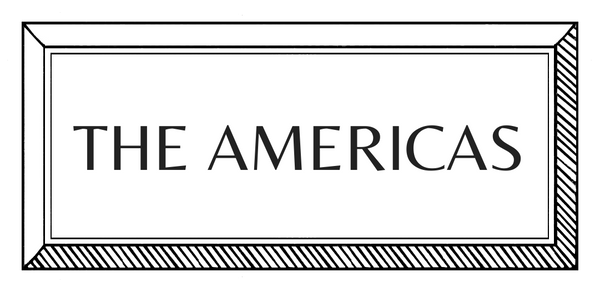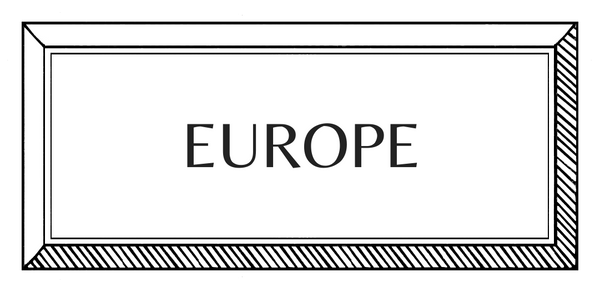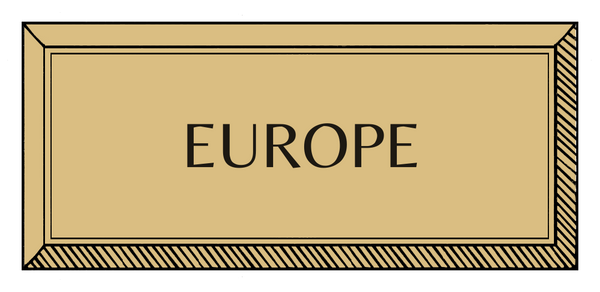MAKERS | EUROPE | ITALY | DECORATIVE PAINTING
Assia Pallavicino | Decorative Painter

© Dimitri D’ippolito
From her studio in Florence, Assia Pallavicino transforms walls into painted worlds, drawing on the botanical beauty of Tuscany and the illusionistic techniques of classical decorative arts. Trained at Brussels' renowned Van Der Kelen Logelain Institute, she brings a modern sensibility to age-old traditions, crafting trompe l'oeil, faux marbles and hand-drawn landscapes for European interiors. "Nature is always where I go back to," she says. With roots in a family of artists and early guidance from her aunt Idarica Gazzoni Frascara, founder of Arjumand's World, Assia's work distils a rich heritage into delicate, deeply personal detail.
How did you begin?
I was living in London and working in the music industry, and I just wasn’t happy. I ended up spending time in Milan with my aunt, Idarica Gazzoni, the founder of Arjumand's World and an incredible decorative painter. She used to do this professionally in the 1990s and had painted a room in one of our family homes in Tuscany. I’d always been mesmerised by it but never thought of it as a real career path.
After returning to Italy, she took me under her wing, brought me on a few projects, and told me it was something I’d love. And she was right. I completely fell in love with it. That’s when I knew I wanted to change direction and train properly.

How did you learn?
Most of what I learned initially was self-taught. I started working before I went to school, following my aunt and then another painter in Florence, Francesca Guicciardini, who is an incredibly talented interior painter.
I had no prior painting skills, so I truly learned from scratch. Eventually, I enrolled at Van Der Kelen in Brussels, a specialised school for trompe l’oeil. It’s an intensive eight-month course, and upon returning, I began taking on projects of my own and collaborating with other painters and designers.

Assia is inspired by her artistic family, including her grandmother. Pictured, a watercolour of her grandmother's home designed by Colefax and Fowler in the 1980s
How do you plan, prepare and execute your works?
It usually begins with a phone call from the client, during which they describe the space and their idea. Sometimes they already know what they want, sometimes they ask me to propose something. I always ask whether they’re leaning toward something botanical, geometrical, or landscape-based so I can begin forming a direction.
Then I conduct a site visit, observe the light, energy, and context, and we finalise the concept. Back in my studio, I create a sketch in watercolour to be approved. Once that’s signed off, we set a start date and I begin work on site. It can take up to a month, depending on the project and the construction schedule, but if the brief is clear and timelines are tight, I can move quite quickly.
Who or what most influences your work?
Nature is my greatest teacher. At school, we were taught to paint by observing and copying what we saw. Faux wood, hand-painted faux marble, trompe l’oeil, all of it comes from studying the real thing.
Living in Florence, I am constantly inspired. Lately, I’ve been working more with natural motifs, particularly botanical ones. Tuscany, in every season, is a constant source of inspiration.

Assias' chequered design was inspired by Medieval Chianti's, which was hand-painted inside the Osteria di Passignano.
What does a typical day look like?
I travel a lot for work and spend weeks at a time in construction zones or historic homes. However, I do have a small studio at home in Florence, where I paint my watercolor sketches and plan upcoming projects. I’ve also painted my apartment. Just the colors for now, nothing too wild, since I rent. But color is so important to me. It changes the whole feeling of a space.
If I’m on site, I wake up and go straight there. I’ll spend the day painting walls, ceilings, sometimes even floors. If I’m at home, I’m usually in the studio working on sketches or handling communications and planning. I also do quite a bit of colour consultation now. Interior designers will call me to help coordinate tones for a project, and that’s something I’ve grown to enjoy. It’s less physical, which is a nice change sometimes.

The best and worst things about being a craftsperson today?
The best thing is doing something I love. That’s a huge privilege, and one I take very seriously. But my work is highly physical. It’s long hours, standing and painting all day, sometimes for weeks at a time. It can be isolating and take you completely away from your everyday life. It’s not draining exactly, but it’s demanding both physically and mentally. You have to give it everything.
An object you’ll never part with?
I always wear these wonderful headscarves when I work. They’re all from the same little shop in Cortina d’Ampezzo, and I buy them every time I go. I’m wearing one right now. They’ve become a bit of a ritual, and they’re practical too. You’re constantly surrounded by dust on construction sites.

A place or space that inspires you?
The living room of my dear friend Virginia De Renzis Sonnino’s home, Castello Sonnino in Montespertoli. It’s a castle, and the room is entirely hand-painted. It is the most magical room I’ve ever seen. It’s become quite well-known now, but we grew up in it.
Every time I return, I see something new. There are also endless sources of inspiration here in Florence. Palazzo d’Avanzati, Palazzo Pitti, and the countryside just beyond the city. Everywhere you go, there’s beauty.
Interview by Emma Becque
Photography from Assia Pallavicino & Dimitri D’ippolito












































